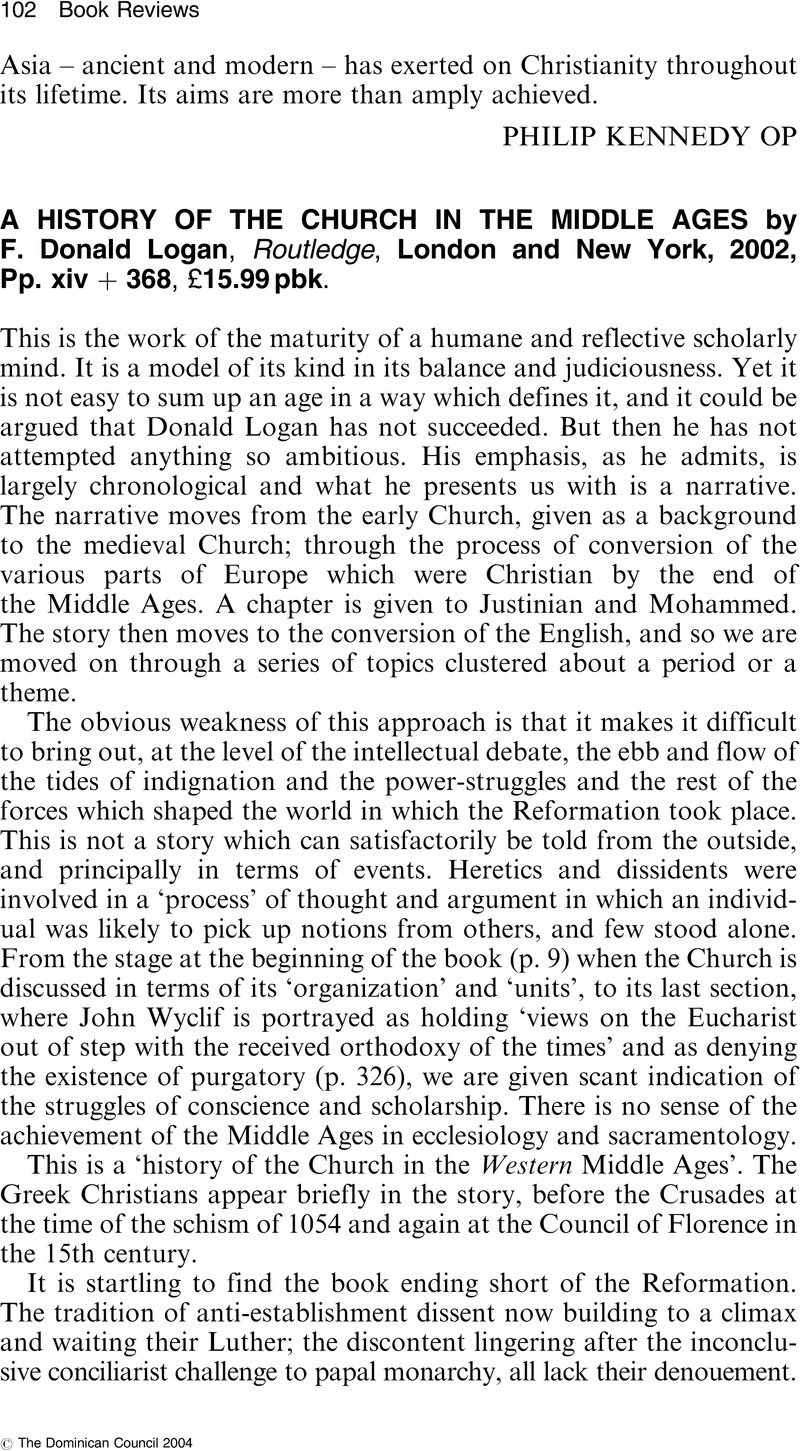No CrossRef data available.
Article contents
A History of the Church in the Middle Ages by F. Donald Logan, Routledge, London and New York, 2002, Pp. xiv + 368, £15.99 pbk.
Review products
A History of the Church in the Middle Ages by F. Donald Logan, Routledge, London and New York, 2002, Pp. xiv + 368, £15.99 pbk.
Published online by Cambridge University Press: 01 January 2024
Abstract
An abstract is not available for this content so a preview has been provided. Please use the Get access link above for information on how to access this content.

- Type
- Book Reviews
- Information
- Copyright
- Copyright © The Dominican Council/Blackwell Publishing Ltd 2004


